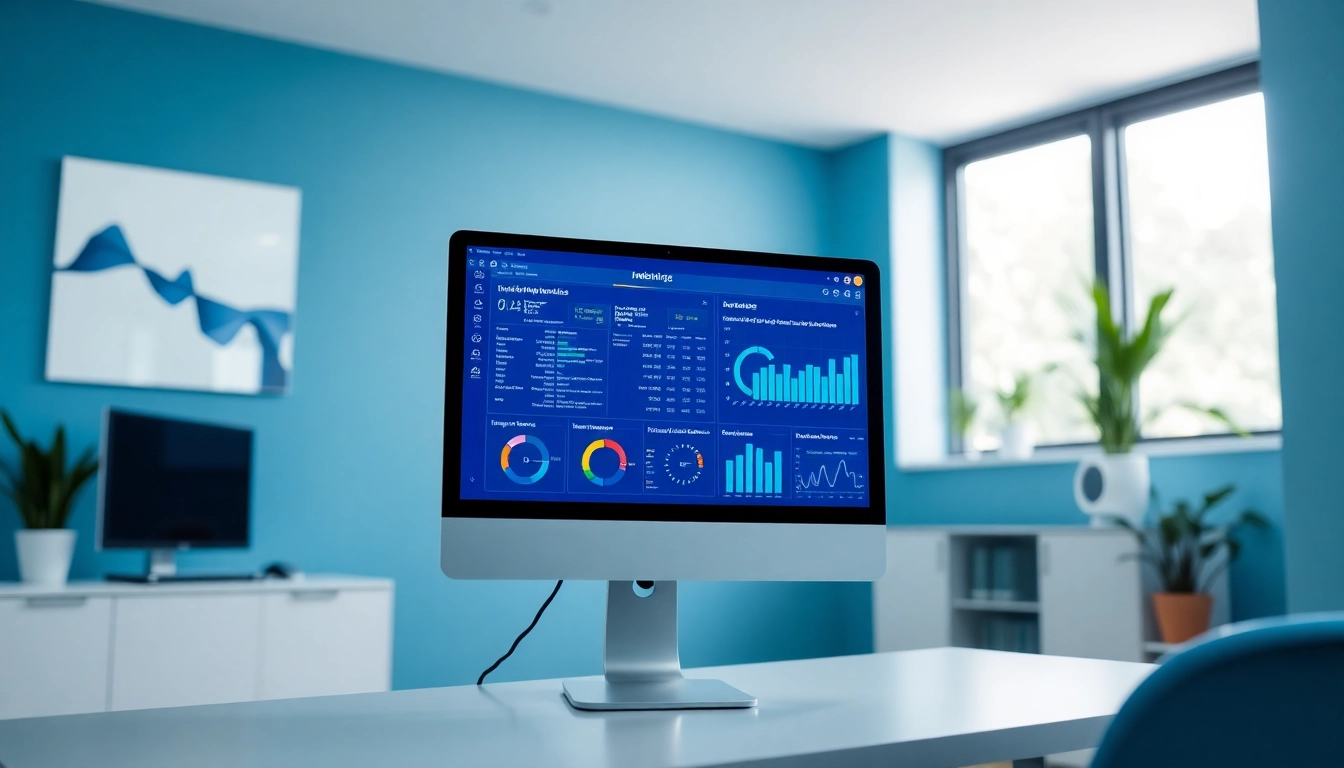Understanding Informatics in Healthcare
In the rapidly evolving landscape of healthcare, informatics plays a pivotal role in bridging the gaps between technology and patient care. It encompasses the collection, organization, analysis, and application of data to improve healthcare delivery. From enhancing clinical workflows to empowering patient engagement, informatics integrates critical components that drive efficiency and patient-centric solutions. For more insights, healthcare professionals and academicians alike can refer to resources available at https://www.informaticsview.com.
What is Informatics in Healthcare?
Informatics in healthcare is a multidimensional field that combines elements of computer science, information science, and healthcare to enhance the quality of patient care and health outcomes. It focuses on creating systems, processes, and applications that facilitate the management and use of information in clinical settings. The essence of healthcare informatics lies in its ability to transform clinical data into actionable insights that can improve decision-making and optimize healthcare resources.
Key Components of Healthcare Informatics
The major components of healthcare informatics include:
- Data Management: Involves the systematic organization, storage, and retrieval of health data, ensuring that information is accessible and usable.
- Interoperability: Ensures different information systems and technologies used in healthcare can communicate and exchange data seamlessly.
- Clinical Decision Support: Systems designed to enhance healthcare delivery by providing health professionals with clinical decision-making tools based on patient data.
- Patient Engagement: Utilizing technology to enhance relationships between healthcare providers and patients, fostering a more interactive approach to healthcare.
- Health Information Exchange (HIE): The electronic transmission of health information across organizations to facilitate better coordinated care.
The Role of IT in Health Solutions
Information Technology (IT) is the backbone of healthcare informatics. IT systems facilitate the storage, retrieval, and management of vast amounts of health data, enabling healthcare providers to deliver timely and effective care. The use of Electronic Health Records (EHRs) is a prime example, as they centralize patient information, allowing for better coordination among healthcare teams. IT also plays a crucial role in data security, ensuring that sensitive patient information is adequately protected. Additionally, advancements in artificial intelligence and machine learning are continuously shaping informatics solutions, making healthcare more efficient and effective.
Importance of Data Management in Health Informatics
Effective data management is critical in healthcare informatics as it directly impacts the ability to provide quality patient care. It encompasses processes ranging from data capture to information sharing among healthcare providers. Managing data efficiently leads to improved clinical outcomes as it enables personalized care tailored to individual patient needs.
Managing Electronic Health Records
Electronic Health Records (EHRs) serve as the primary repository of patient data in most healthcare organizations. They comprise comprehensive information about patients, including demographics, medical history, medications, and test results. Efficient management of EHRs includes:
- Ensuring data accuracy and completeness to support clinical decision-making.
- Improving accessibility for healthcare providers while safeguarding patient privacy and confidentiality.
- Facilitating workflows by integrating EHRs with other healthcare systems to streamline clinical processes.
- Employing standards and frameworks to enhance interoperability and facilitate data exchange across platforms.
Data Security and Patient Privacy
As healthcare organizations increasingly adopt digital solutions, the importance of data security and patient privacy cannot be overstated. Healthcare data is subject to various regulations, including the Health Insurance Portability and Accountability Act (HIPAA) in the United States. Best practices include:
- Implementing robust access controls to limit data access to authorized personnel only.
- Utilizing encryption to protect data during transmission and storage.
- Regularly training staff on privacy policies and data security measures to mitigate risks of breaches.
- Conducting regular audits and assessments to identify vulnerabilities in data security.
Interoperability Standards in Informatics
Interoperability is crucial for the effective sharing of data across different healthcare systems and technologies. Establishing common standards allows for seamless data exchange, which is vital for coordinated patient care that spans different providers and organizations. Key standards include:
- HL7: An international standard for the exchange, integration, sharing, and retrieval of electronic health information.
- FHIR (Fast Healthcare Interoperability Resources): A standard that aids in data interoperability by using web standards, which can accelerate the deployment of healthcare applications.
- ICD-10: The International Classification of Diseases, which provides codes for classifying diseases and health conditions, facilitating standardized data for statistics and reimbursement.
- LOINC (Logical Observation Identifiers Names and Codes): A universal coding system for identifying lab tests, measurements, and observations, allowing for consistent reporting.
Applications of Informatics in Clinical Settings
Informatics finds numerous applications in clinical settings, enhancing patient care and driving operational efficiencies. By integrating technology and data analysis, informatics fosters improved patient outcomes and satisfaction.
Clinical Decision Support Systems (CDSS)
CDSS are software applications designed to assist healthcare providers in making clinical decisions. These systems analyze patient data and provide evidence-based recommendations, which can lead to more accurate diagnoses and appropriate treatment plans. Key benefits of CDSS include:
- Reducing medication errors through alerts and reminders about drug interactions.
- Enhancing the speed of clinical decision-making, allowing for timely interventions.
- Providing access to the latest clinical guidelines and research, ensuring that decisions are grounded in current best practices.
Telemedicine and Remote Patient Monitoring
Telemedicine leverages technology to provide healthcare services remotely, breaking down geographical barriers and expanding access to care. Remote patient monitoring (RPM) complements telemedicine by utilizing wearable devices and apps to monitor patients’ health in real time. Benefits include:
- Improved access to care for patients in rural areas with limited healthcare facilities.
- Enhanced patient engagement through regular monitoring and follow-ups.
- Reduction in hospital readmissions by providing timely interventions based on real-time data analysis.
- Cost savings for both patients and healthcare systems by streamlining care delivery.
Health Information Exchange (HIE) Benefits
Health Information Exchange (HIE) is the electronic sharing of health-related information among organizations. HIE facilitates better coordination of care, especially for patients who receive treatment from multiple providers. Key benefits of HIE include:
- Improved continuity of care by ensuring that healthcare providers have access to the most up-to-date patient information.
- Enhanced decision-making capabilities, as healthcare providers can make informed choices based on comprehensive data.
- Reduction in unnecessary duplicate tests and procedures, which can lower healthcare costs and patient burden.
- Better public health tracking and response capabilities through the sharing of vital health information for monitoring disease outbreaks.
The Future of Informatics in Healthcare
As technology advances, the landscape of healthcare informatics continues to evolve, bringing new opportunities and challenges in delivering patient care. Embracing emerging technologies and innovative practices will be crucial for future success.
Emerging Technologies Impact
Emerging technologies such as Artificial Intelligence (AI), Machine Learning (ML), and Blockchain are poised to revolutionize healthcare informatics. They can lead to significant advancements, including:
- AI and ML: These technologies can analyze vast datasets to identify trends, predict outcomes, and assist in diagnosis, improving clinical efficiency and patient care.
- Blockchain: Providing a secure and tamper-proof method for storing and sharing health data, ensuring data integrity while enhancing patient privacy.
- Wearable technology: Devices that continuously monitor patient vitals, facilitating proactive health management and enabling remote patient care.
- Telehealth innovation: Expanding access to care through enhanced remote consultations and integrated communication platforms for patient-provider interactions.
Telehealth and Patient Engagement Strategies
Patient engagement is central to effective healthcare delivery, and telehealth can enhance this engagement through various strategies, such as:
- Utilizing user-friendly interfaces and applications that simplify access to healthcare services.
- Integrating patient education tools within telehealth platforms to empower patients with information.
- Implementing feedback mechanisms to gather patient input and improve services continually.
- Encouraging collaboration between patients and providers through shared decision-making and goal-setting.
Data Analytics and Predictive Modeling
The use of data analytics and predictive modeling in healthcare informatics is invaluable for identifying health trends, improving population health management, and optimizing resource allocation. Key components include:
- Predictive analytics: Leveraging historical data and machine learning techniques to forecast patient outcomes and identify at-risk populations.
- Risk stratification: Categorizing patients based on specific risk factors to tailor interventions effectively.
- Operational analytics: Analyzing operational data to enhance productivity, reduce costs, and streamline healthcare delivery processes.
- Quality improvement: Utilizing data insights to monitor performance metrics and implement best practices to enhance care quality.
Best Practices for Implementing Health Informatics
To maximize the benefits of healthcare informatics, organizations must adopt best practices that foster a culture of data-driven decision-making and continuous improvement.
Building a Culture of Data-Driven Decisions
Creating a data-driven culture within healthcare organizations involves:
- Engaging leadership to advocate for the importance of data in decision-making processes.
- Providing training and resources to staff to improve their data literacy and analytical skills.
- Establishing clear policies regarding data governance and usage to foster accountability and security.
- Encouraging interdisciplinary collaboration to integrate knowledge and expertise across various departments.
Training and Development for Healthcare Professionals
Ongoing training and development are essential to equip healthcare professionals with the skills needed to navigate the complexities of informatics. Strategies include:
- Providing comprehensive onboarding programs that cover the use of informatics tools and systems.
- Offering continuous professional development opportunities, including workshops, seminars, and certifications.
- Encouraging mentorship and peer-to-peer learning to foster knowledge sharing within the organization.
- Creating a learning management system that allows staff to access training materials and resources at their convenience.
Measuring Success in Informatics Initiatives
To evaluate the success of healthcare informatics initiatives, organizations should:
- Establish key performance indicators (KPIs) related to patient outcomes, data accuracy, system usability, and user satisfaction.
- Conduct regular assessments and audits to identify areas for improvement and to measure progress.
- Gather feedback from both healthcare providers and patients to inform future improvements.
- Utilize data analytics to track trends and identify the impacts of informatics initiatives on overall care quality.









